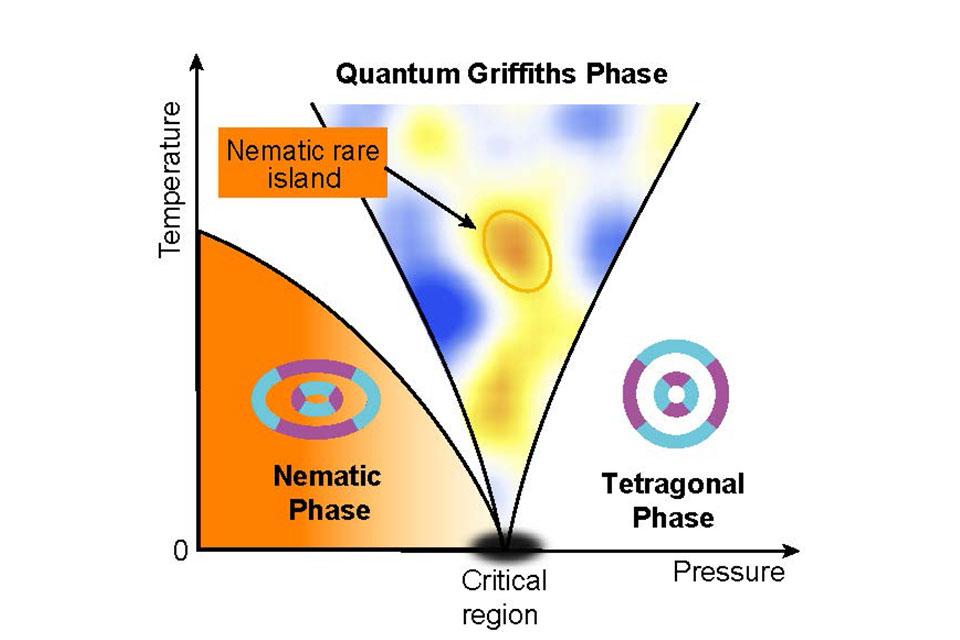Physicists at Oxford have discovered a new electronic phase of quantum matter relating to a quantum Griffiths phase where the typical quantum mechanical correspondence between time and space breaks down. This latest discovery leads to new mathematical concepts such as continuously varying critical exponents which defy our usual understanding of quantum mechanical systems.
The origin of this highly unconventional behaviour is the formation of nematic islands in an otherwise homogenous electronic sea which occurs as a function of temperature and another control parameter, only in the vicinity of the nematic quantum phase transition. Moreover, the work finds that the overall system is governed by a new and surprisingly simple equation which provides a much better understanding of these strange forms of matter.
Pioneering physics
Scientists in the Quantum Materials group at Oxford’s Department of Physics are pioneers in the study of nematic electronic phases in the quantum critical regime found in iron-based superconductors. In this unusual regime, the interactions between electrons become so large that they not only fully dominate the materials properties but they also develop collective behaviour and they can develop unusual anisotropies in their electronic behaviour.
‘The discovery of new manifestations of quantum mechanics always comes as a surprise, in particular in unconventional superconductors,’ comment the scientists involved in the work, Dr Pascal Reiss and Professor Amalia Coldea. ‘This is because the nature of quantum physics remains unpredictable a priori due to the large number of variables involved which can give rise to unexpected collective phenomena.’
Experimental techniques under extreme conditions
Extreme conditions are required to access and study new phases of quantum matter – such as the application of hydrostatic pressure, a unique tool that can be used to tune the relative importance of different parameters in a single material across different electronic phase transitions. Using this method, the different electronic ground states can be explored in their quantum regime using various experimental techniques at the lowest temperatures and in the highest steady magnetic fields available. This elegant combination of experimental tools applied to perfect crystalline quantum materials can reveal the underlying organisation of the electronic structure of novel systems, such as their distribution and velocities of the electrons in their quantum state.
The research was supported by the RCUK through the Engineering and Physical Sciences Research Council and the Oxford Centre for Applied Superconductivity (CFAS). Experiments were performed using both using the high-magnetic field facilities in Oxford up to 16T as well as the National High Magnetic Fields in Tallahassee, USA up to 45T.
Signatures of a Quantum Griffiths Phase close to an Electronic Nematic Quantum Phase Transition, by Pascal Reiss, David Graf, Amir A Haghighirad, Thomas Vojta, and Amalia . Coldea, Phys. Rev. Lett. 127, 246402 (2021).

